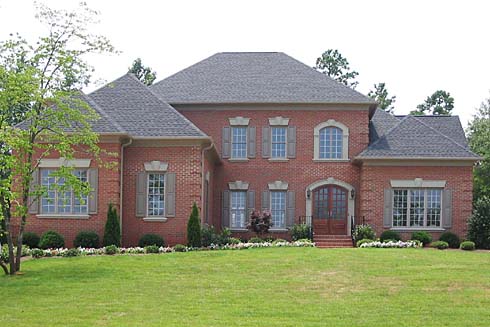IMPROVEMENTS
Understanding Improvements in Real Estate
In the realm of real estate, the concept of improvements encompasses a broad spectrum of enhancements made to raw land, with the objective of increasing its value and utility. These additions can range from basic infrastructural elements to comprehensive developments, each contributing to the overall worth and potential of the property.
Types of Improvements
Improvements in real estate can take various forms, each playing a distinctive role in augmenting the value and functionality of the land:
Structural Additions:
This category includes the construction of buildings, houses, and other physical structures on the land, serving as the most tangible and prominent form of improvement.
Utilities and Infrastructure:
Improvements also encompass the installation of essential utilities such as water supply systems, sewage facilities, electricity, and roads, all of which are fundamental for enhancing the usability and accessibility of the land.
Landscaping and Aesthetics:
Enhancements aimed at improving the visual appeal and environmental quality of the land, such as landscaping, gardening, and the addition of recreational features, also fall under the purview of improvements.
Impact on Property Value
The significance of improvements in real estate lies in their capacity to elevate the value of a property and expand its potential applications:
Enhanced Utility:
By introducing amenities and infrastructure, improvements render the land more functional and adaptable for various purposes, thereby amplifying its value in the eyes of potential buyers or investors.
Aesthetic Appeal:
Aesthetically pleasing improvements, such as well-maintained landscaping or architectural enhancements, can significantly elevate the curb appeal of a property, contributing to its overall value in the market.
Marketability and Demand:
Properties with substantial improvements often enjoy heightened demand and improved marketability, as they offer ready-to-use features and facilities that appeal to a broader spectrum of prospective buyers or tenants.
Marketability and Demand:
Properties with substantial improvements often enjoy heightened demand and improved marketability, as they offer ready-to-use features and facilities that appeal to a broader spectrum of prospective buyers or tenants.
Considerations for Stakeholders
For buyers, sellers, and investors involved in real estate transactions, understanding the implications of improvements is vital:
Due Diligence:
Buyers should conduct thorough assessments of the quality and impact of the improvements on a property to ensure that they align with their intended use and investment goals.
Marketing and Presentation:
Sellers can leverage the improvements on their property as selling points, emphasizing the added value and attractiveness of the land to potential buyers or lessees.
Investment Potential:
Investors should consider the potential for further development or enhancement of existing improvements to maximize the long-term value and returns on their real estate assets.
Conclusion
In the dynamic landscape of real estate, improvements serve as catalysts for augmenting the value, functionality, and appeal of raw land. Whether it's the construction of physical structures, the installation of utilities, or the enhancement of aesthetics, these additions play a pivotal role in shaping the marketability and investment potential of properties. By comprehending the impact of improvements, stakeholders can make informed decisions, capitalize on opportunities, and unlock the full potential of real estate assets within an ever-evolving market.
MORE REAL ESTATE TERMS
A, B, C, D, E, F, G, H, I, J, K, L, M, N, O, P, Q, R, S, T, U, V, W, X, Y, Z
Featured New Home

Featured Mortgage Brokers
- Altamont Mortgage Funding Inc, mortgage broker in Portland, OR
4380 SW Macadam Ave Ste 125
Portland, OR 97239 - COBALT MORTGAGE, EVERETT, WA
2825 COLBY AVE STE 305
EVERETT, WA 98201 - Priority Mortgage Corp., mortgage broker in Worthington, OH
150 E Wilson Bridge Rd Ste 350
Worthington, OH 43085 - ADVISORS MORTGAGE GROUP LLC, TURNERSVILLE, NJ
4991 BLACK HORSE PIKE
TURNERSVILLE, NJ 8012 - PRYSMA LENDING GROUP LLC, DANBURY, CT
10 PRECISION RD STE 2B
DANBURY, CT 6810